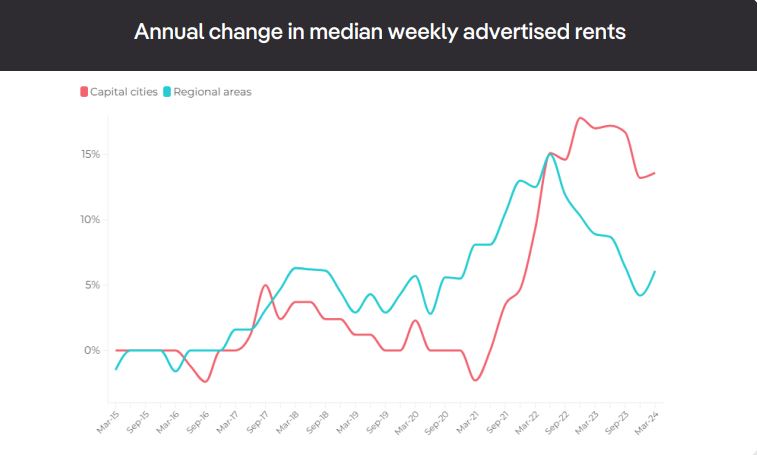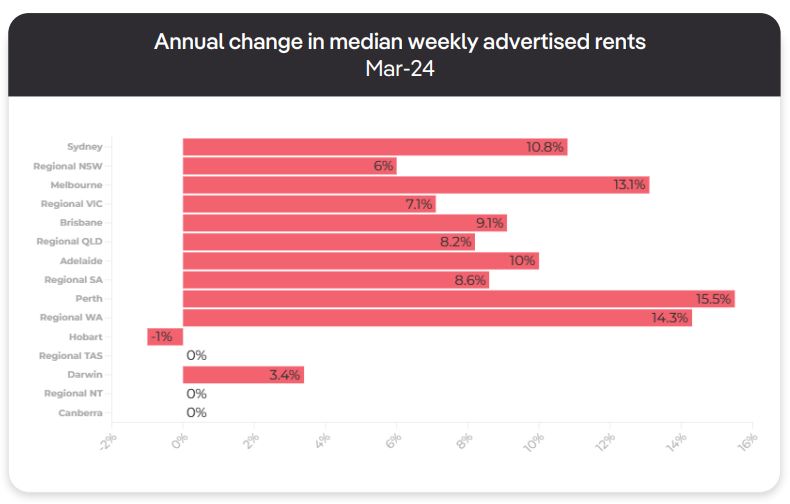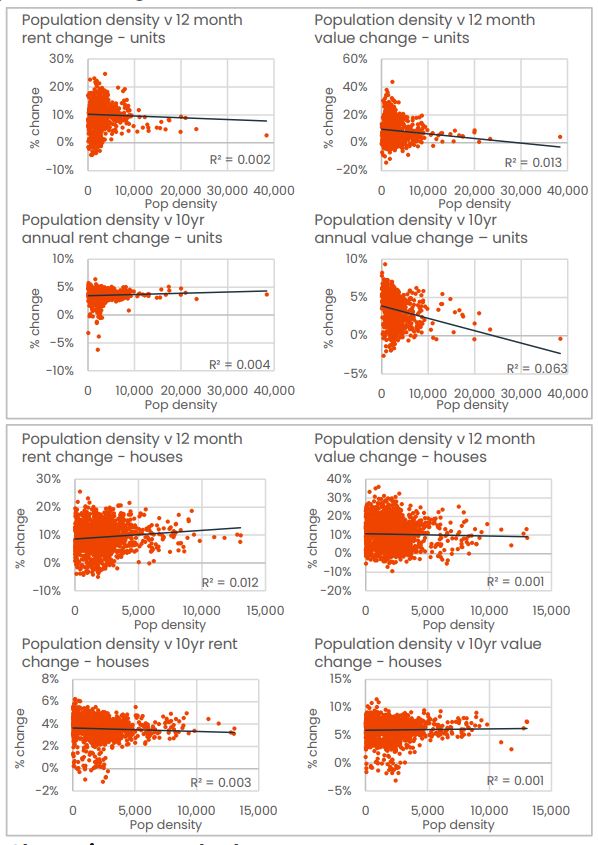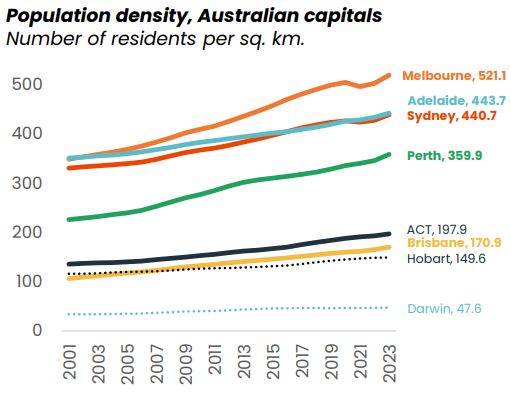Rent rises ease but crisis' link to population density found to be tenuous
The pace of rental price growth is finally showing signs of slowing but a surprising study has found the rental crisis is not attributable to increased population density.
The pace of rental price growth is finally showing signs of slowing.
In the year to March 2024, national advertised rents increased by 9.1 per cent or by $50 per week – the first time in two years that price growth was below 10 per cent.
The quarterly PropTrack Rental Report March 2024 released Wednesday (24 April) offered a glimmer of hope that rents may be starting to overcome the strains on housing supply and still rising population levels.
Low rental listings are still maintaining upward price pressure that is making life difficult for renters and those trying to find a rental property.
Total rental listings were down 11.3 per cent from March 2023, with the fewest total rental listings for the month of March since 2010.
PropTrack Director Economic Research, Cameron Kusher, said the national rental market has remained challenging for renters over the first quarter of 2024.
“With rents increasing alongside the cost of living, fewer people will be able to afford these higher prices and will look for cheaper alternatives including smaller properties or share house living, while others may expedite buying a home instead,” Mr Kusher said.
“A mismatch between demand and supply of rental stock clearly remains and is unlikely to be rectified any time soon.
“While we are seeing more lending activity to investors and first home buyers, population growth remains heightened as does investor selling, and housing construction remains at extremely low levels.
“The scarcity of new rental listings reflects the challenge that renters are facing, with a significant shortage of properties becoming available for rent and more people renting.
“As was the case in 2023, we expect that the rate of rental growth will continue to slow in 2024.”
Annual rental growth has remained much stronger in capital cities than regional markets, and growth is relatively stronger in the major capital cities than it is in the smaller ones.
Rents are increasing rapidly, encouraging more people to become first home buyers, however only a certain cohort of renters can make this transition.
Over the year to February 2024, the value of lending to owner occupier first home buyers increased by 20.7 per cent, its largest annual rise since July 2021.
Anglicare Australia executive director Kasy Chambers said the rental market is as bad as it has ever been.
The 2024 Anglicare Australia Rental Affordability Snapshot released Tuesday revealed a mere 13.4 per cent of rental listings across the country are affordable for a family of four with both parents on a full-time minimum wage, and a negligible 1.8 per cent are affordable for a single parent on a full-time minimum wage.
Is there a link between property prices, rent and density?
PropTrack’s rent data coincided with the release of report by CoreLogic that defied the widespread notion that population density was intrinsically linked to rental prices.
The report compiled by Tim Lawless, Research Director Asia Pacific, CoreLogic, found that the relationship between population density and rental growth is actually weak, and in the case of houses counterintuitive.
“Population density across the unit sector provides little explanatory value about unit rental growth over the past 12 months or the past 10 years,” Mr Lawless said.
“Areas with a high population density have shown slightly stronger rental appreciation over the past 12 months relative to lower population density areas, but slightly weaker growth over the past decade.
“The relationship between density and appreciation in house rents is even weaker than seen across the unit sector, but the weak relationship runs opposite to that of units, where higher population densities have been associated with slightly weaker rental appreciation than areas with a lower population density over the past 12 months and slightly stronger over the past decade.”
Australia’s population moving through the fastest rate of growth since the 1950’s, our cities and towns are naturally densifying.
Yet when it comes to property values, the findings were broadly similar to the rent correlation, or lack thereof.
“High population densities provide virtually no explanatory power for house values (with the coefficient of determination just .001) over the past 12 months and over the past decade,” Mr Lawless said.
“Over the long term, precincts with a high population density tend to show slightly stronger growth in unit rents, but softer rates of capital appreciation across the unit sector, while for houses there is hardly any relationship between population density and trends in rental or value appreciation.”
At a national level, the population density of 3.5 people per square kilometre (sq. km) is among the lowest in the world.
But the nation’s cities are highly urbanised, with 75 per cent of Australia’s population residing on just 2.6 per cent of the land mass. Half the populace lives in the three largest east coast cities.
Every capital city is recording a rise in population density, however, the way this is occurring is quite different from region to region.
Perth, for example, has recorded the largest increase in population over the past 20 years, with 54.4 per cent more residents, yet it has the highest portion of detached houses of any capital, comprising 85.5 per cent of the housing stock.
“Rather than ‘building higher’, Perth has densified via smaller block sizes for detached housing alongside a sprawling urban footprint, where the population has spread to the northern and southern fringes of the city,” Mr Lawless noted.
“A different example of densification can be seen in the ACT, where medium to high density housing stock has risen from a share of 25.1 per cent of all dwellings 10 years ago to 34.2 per cent in 2024, while the median block size for houses sold over the past 12 months remains among the highest of any capital at 750sqm.”
As international migration pushes the population higher, Australians are also moving between states, particularly to Queensland and Western Australia, as well as growing increasingly comfortable investing in property outside their own state.
According to the 2023 Annual PIPA Investor Sentiment Survey released Tuesday, nearly 50 per cent of investors were looking to purchase outside they state they lived in – up from 43.5 per cent the year before.
Real Estate Buyers Agents Association of Australia (REBAA) President, Melinda Jennison, described the trend as borderless investing being “the new property black”.
“REBAA members have reported increasing levels of interest from property investors keen to adopt a ‘borderless’ approach over the years, which is a trend that is likely to continue.
“There is no question that the way we live and work has become much more flexible than ever before, which is part of the reason for the uptick in interstate property investment,” Ms Jennison said.
























